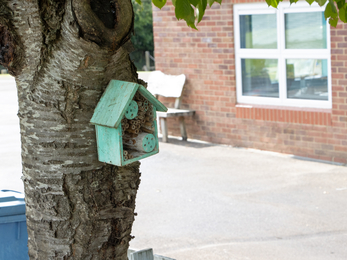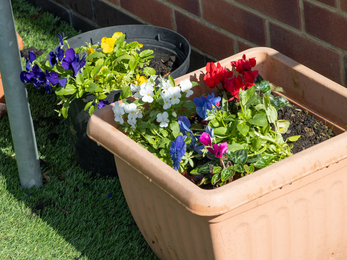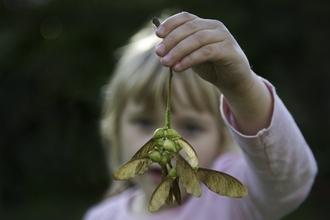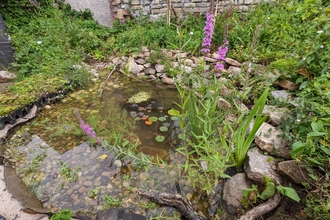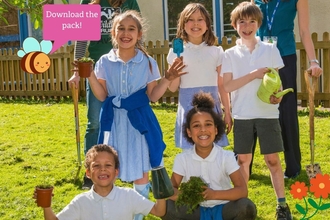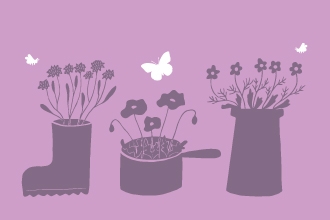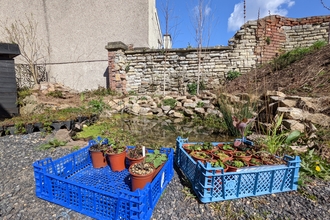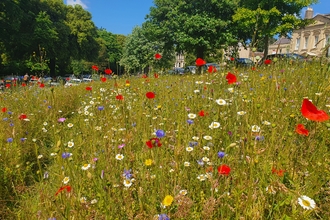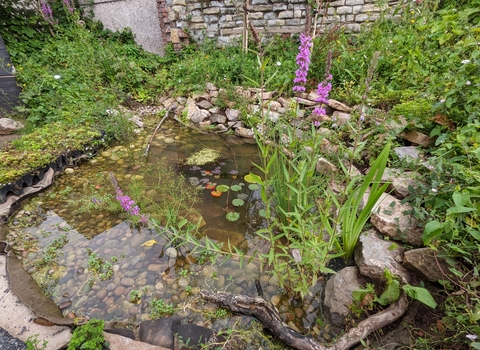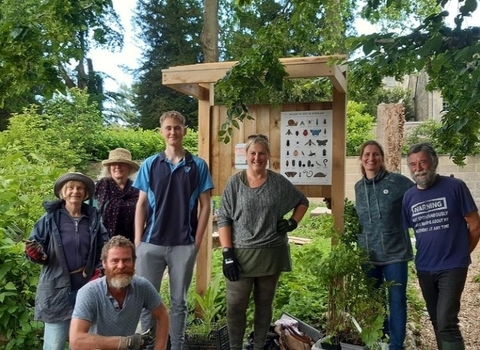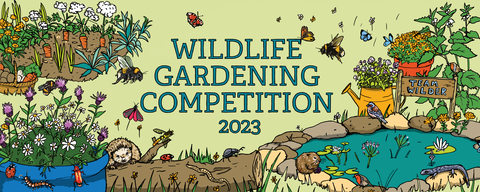
HannahBunn.com
School: Horfield Church of England Primary
Name: Horfield Church of England Primary
Category: School entry in the wildlife gardening competition 2023
Area: Bristol, BS10
Christina Wheeler
What makes your garden wildlife friendly?
The school grounds has lots of different plants and flowers to attract pollinators and birds, as well as looking beautiful. Grass is left to grow long in places such as around the edges of the fields, thanks to a great relationship and understanding about nature with the grounds team. Hedges are an important natural barrier around the school, with native hedges chosen specifically for the benefits of wildlife, like providing shelter and food for birds.
Trees are an important part of the school grounds and new trees have have been planted thanks to various funding pots. Pupils learn a lot about the importance of trees and enjoy picking fruit in the mini orchard, which is also loved by the visiting birds. The woodland area provides shade and calm for pupils as well as being an important habitat space. The pond area has huge potential to teach children about pond life and what wildlife needs to survive.
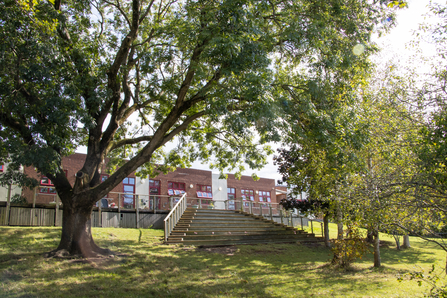
George Cook
Tell us what you love about your garden
There are so many different plants and flowers to attract wildlife and everyone enjoys and appreciates looking at them. It is fun and relaxing to look at the garden and do the planting and watering. It is great to see seagulls, magpies, crows, pigeons, wagtails, foxes, squirrels, bees, butterflies, damselflies, ladybirds and more!
Horfield Church of England Primary School won!
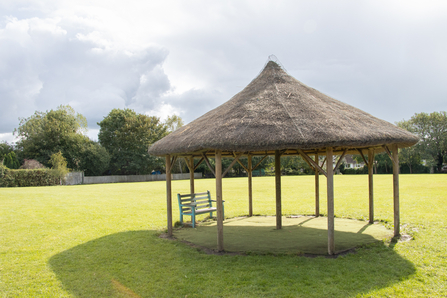
George Cook
Choose different plants that are attractive to bees and other pollinators. Leave long grassy areas. Don't use chemical pesticides. Make sure there are places to nest and hibernate in winter.Horfield Church of England Primary School
Feeling inspired?
There are many actions for nature that Horfield Church of England Primary School take, that can be easily replicated at other schools, gardens and community spaces. This advice was given by the Team Wilder Community Ecologist.
Pollinator plants A ‘nectar café’ has already been created to engage the children. The resource below lists out the best plants for pollinators and also tells you the time of year that specific species bloom. It would therefore be advisable to have a mixture of species that bloom at different times of the year, to ensure a year round resource for pollinators. You can also have a look at ‘bee seed mixes’ that are available. You want to make sure that there are different flowers heads to suit different pollinator species (such as flat heads and tubular flowers).
LEARN MORE: Best plants for pollinators
Night-scented plants could also be planted within the space. This can attract a greater abundance of moths to the space and therefore benefit and attract bats.
LEARN MORE: Night scented plants to attract moths and bats
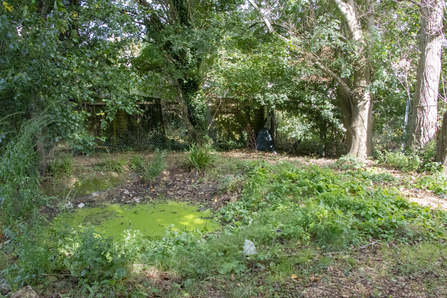
George Cook
Pond plants will need to be cleared from the pond in the autumn (October/November) and a third of the vegetation should be taken out. It is best practice to take only a third out of a pond each year so that the habitat isn’t too disturbed and that there is still shelter for wildlife. Therefore, you may clear another third next autumn, and so on. Try to pick a third this year that will allow for as much open water and light as possible.
It is recommend that you cut back any overhanging branches so that the pond isn’t over-shaded and to reduce the build up of leaves in the water (these increase the nutrients). It is best to plant some marginal plants around the edges and also have a few more submerged and emergent plants too.
Team Wilder ponds
Horfield Church of England Primary School have had a pond for many years, which has been developed by adding pond plants to it and used to have a seating area and dipping platform.
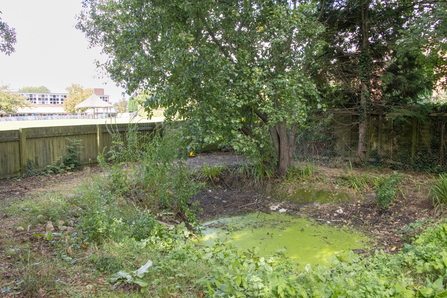
George Cook
CHALLENGE: Over the years the wooden decking became slippery and started to rot, for safety reasons the wood had to be removed. They have recently sourced some funding to get the pond re-done. There are plans to rebuild a new dipping platform and teaching area, so that the children can safely access the pond to learn about wildlife again.
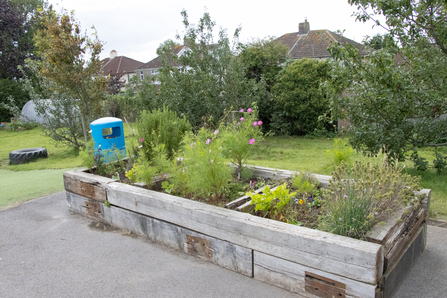
George Cook
Planters close to the classrooms
Most classes involve the children in planting bulbs and seeds, and watching how they grow and caring for them outside their classroom doors each day. There are involved with harvesting and cooking produce.
TIP: When there is enough produce, the Green Club sell herbs, vegetables and potted plants at the School Summer Fayre to raise money to buy more seeds and plants for the next growing season. Other children have been inspired to raise money for planting more trees.
HOW TO: Create a container for wildlife
HOW TO: Fundraising resource
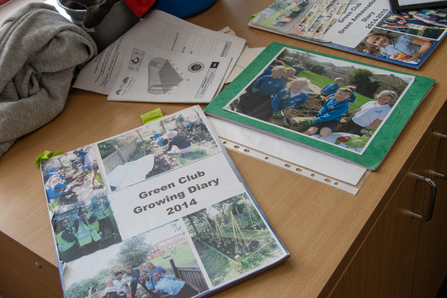
George Cook
Bringing nature into the classroom
Horfield Church of England Primary School have embedded nature into the curriculum. Strong nature themes throughout the school encourage a love and appreciation for wildlife. Classes are named after trees, school aims are linked to nature and there is a theme each year which has a strong link to nature. Pupils are inspired about nature through their worship times, art, literature, singing and within the science and geography curriculum.
The theme is first introduced to the children through high quality text and art activities. Led by Assistant Heads Kirsten Cunningham and Lauren Steel, the teachers worked with their classes to create beautiful nature inspired art. Each classes art is displayed and made into a postcard to be used as a reward for the children. The theme is linked to the children's learning and referred back to throughout the year, further embedding their knowledge and love of nature.
Green Club and Eco Team
Children are involved in decision making to include nature themed projects at school, giving ownership and confidence when making space for nature and learning new skills. The Eco Team, run by Mrs Jenni Moody, sets a monthly challenge to inspire each class to do something for nature. They get hands-on experience planting seeds and bulbs and watching how they grow.
The school also has a polytunnel. Funding was received to built this polytunnel. The Grounds team installed the polytunnel and also a water supply to it. Next to the polytunnel is a new vegetable bed and a compost heap, which is actively used by the children. These were build by the school caretaker, who is very supportive of our gardening projects and actions for nature.
The polytunnel extends the growing season, giving more opportunity for more children to get involved. It is regularly checked and maintained by the caretaker and tidied by a keen group of parent volunteers. The school is fortunate to have parents who are enthusiastic about gardening and wildlife and regularly help in the school grounds.
The School Association is also very supportive of the schools actions for nature and has provided funding for many projects.
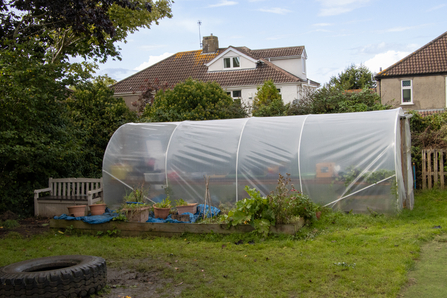
George Cook
Grass cutting and urban meadows
A good relationship with the grounds team goes a long way, especially when being wildlife friendly is a top priority. E.g. Reducing the grass cutting regime and encouraging wildflowers.
HOW TO: Create a mini meadow
Bwe Envirotech Limited understand the impact and importance of their work in looking after the school grounds - for wildlife and for the children and staff.
Tree management
Ash die back has changed the landscape of the UK. This school has taken advantage of free tree schemes and funding opportunities for schools to plant new trees at school, including holding a ceremony for a new Maple tree. The One Tree per Child project (Bristol City Council) also provided some trees. Over the years, many trees have been planted.
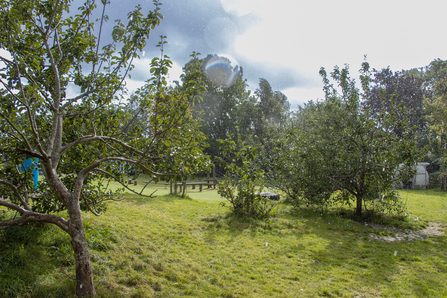
George Cook
Orchard The grass on the orchard floor can be left to grow long each year and cut at the end of the summer (late august-mid September). You might also want to leave some parts of it uncut for 2/3 years so that it becomes tussocky and provides overwintering habitat for reptiles, invertebrates and other wildlife. For example, the grass can be left long in the margins of the orchard, alongside the school boundary.
The children love the orchard on site and are happy picking apples when in season. Apples grown in the mini orchard have been used in their cooking projects in school, as well as the school caterers who used the apples in apple muffins.
HOW TO: Plant a tree and make a woodland edge garden
Hideaway Forest School
The school is lucky to have an amazing outdoor area for forest school, which is really active. They identify flora and fauna, create wildlife habitats like log piles and stone piles. There is a wildflower area and they learn about foraging, including collecting blackberries, nettles and dandelions,
Hedgerows
There are a lot of hedgerows on the schools grounds and quite a few have been planted over the years. This creates a green corridor for wildlife around the school and allows movement of hedgehogs and other small mammals. There are many mixed native hedges, as well as dog rose growing, which is beautiful. Berries grown in the hedges provide food for the birds.
LEARN MORE: Team Wilder natural barriers
The above resource includes real examples and advice about native hedges, dead hedges and willow barriers.
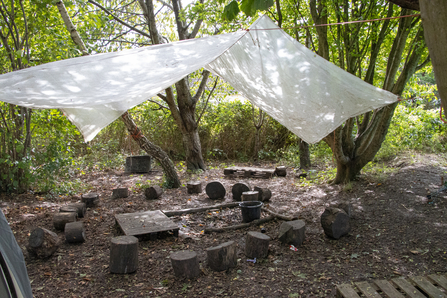
George Cook
The Explorer Dome as featured in the video, where the children had an interactive session learning about renewable energy, as a result of funding from Science teacher of the year. This lead to the children being involved in choosing renewable energy for their reading cabin on the school grounds. Solar panels and wind power produced the best results from science experiments carried out by the children.
Resources
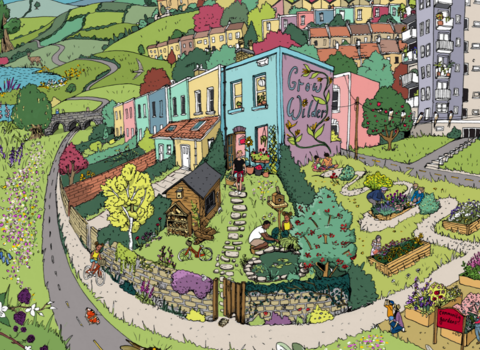
(C) Hannah Bunn
Be part of Team Wilder
Feeling inspired by this school? Try something for yourself at home, in your community, school, business or land, no matter the size.
All actions for nature collectively add up and makes a difference for people and wildlife.
Share your actions for nature, like Horfield Church of England Primary School, and motivate others to do the same.
Log your actions for nature on the map

